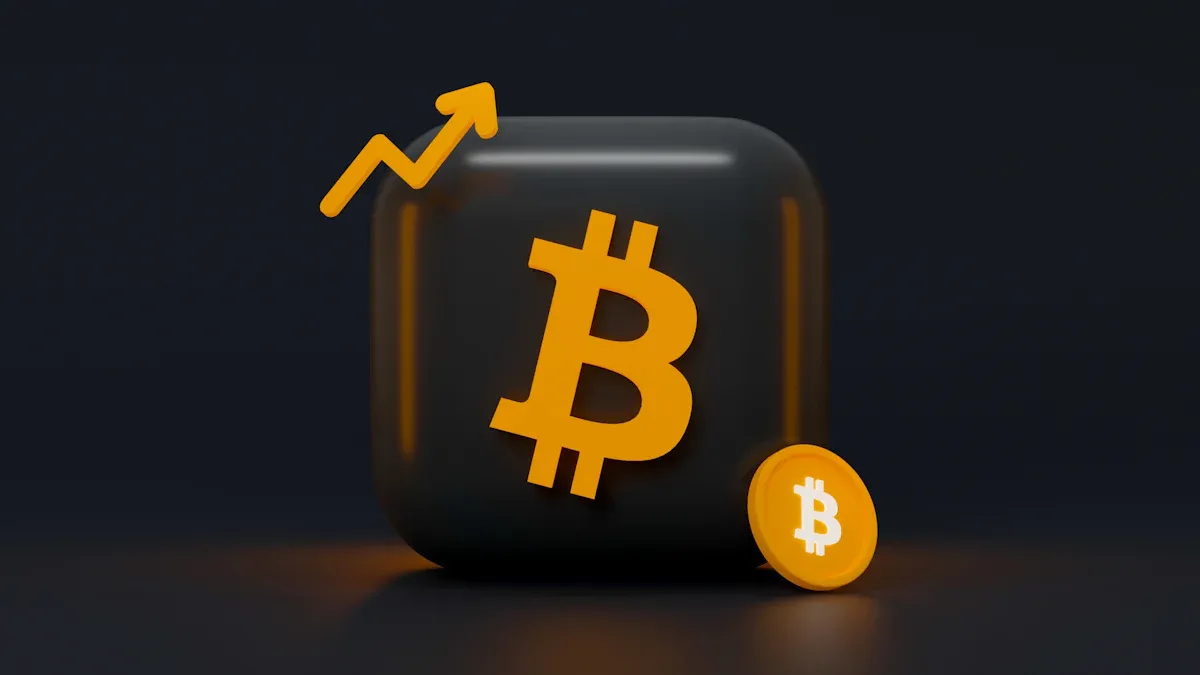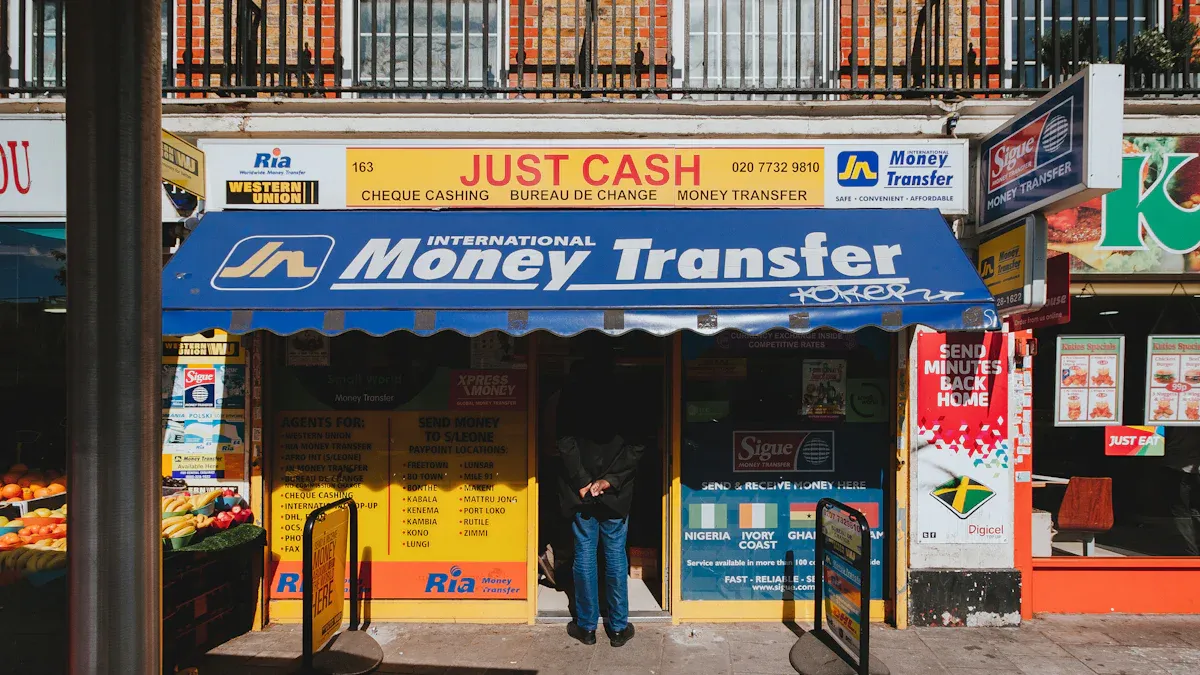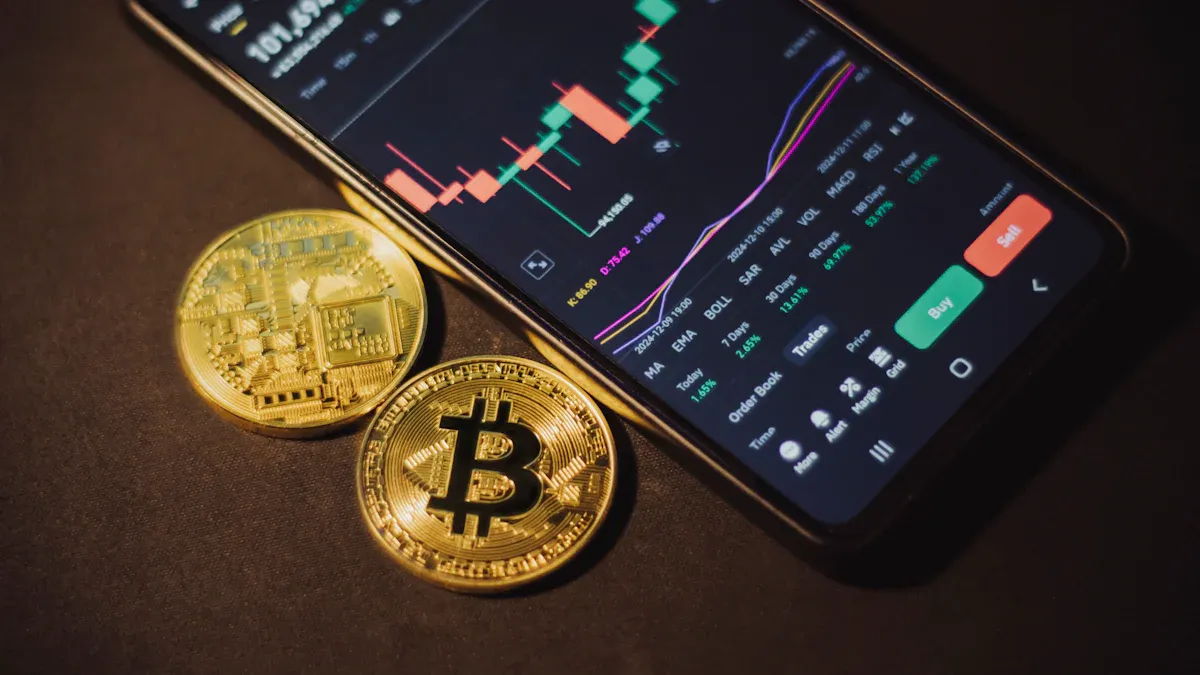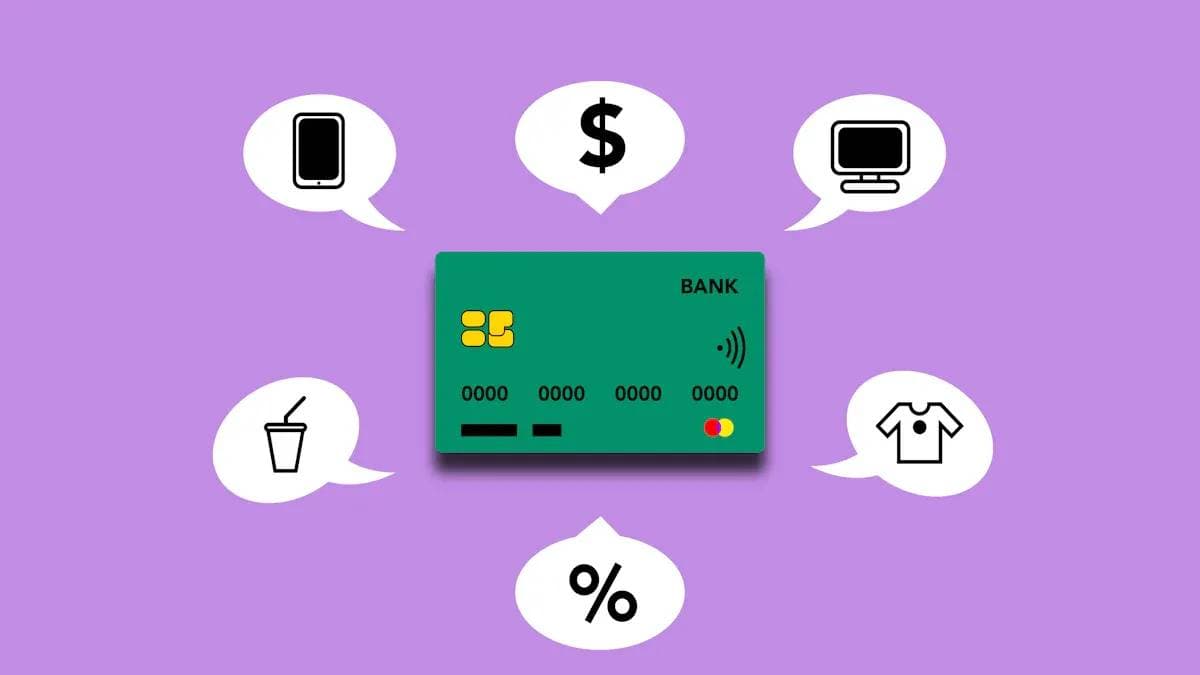- EasyCard
- Trade
- Help
- Announcement
- Academy
- SWIFT Code
- Iban Number
- Referral
- Customer Service
- Blog
- Creator
From Days to Seconds: In-Depth Analysis of Transfer Speed Differences Between Digital Currency and Wire Transfers

Image Source: unsplash
You may have experienced this: a cross-border wire transfer requires waiting several days to arrive. But a digital currency transfer can take as little as a few seconds at the fastest. Where does this huge speed difference come from?
This contrast between “days” and “seconds” hides completely different technologies and processes behind it.
To give you a more intuitive feel, take a look at the theoretical confirmation times for different digital currencies:
| Cryptocurrency | Confirmation Time |
|---|---|
| Bitcoin | Approximately 10 minutes |
| Ethereum | Average 12-15 seconds |
| Solana | Less than 1 second |
This leads to our core question: what creates such an astonishing speed gap?
Key Takeaways
- Traditional wire transfers are slow because they must pass through multiple banks and manual reviews, like international packages needing many transit stations.
- Digital currency transfers are fast because they use blockchain technology for direct peer-to-peer transmission without intermediate links.
- Blockchain is decentralized and operates 24/7, with transactions automatically verified by algorithms, making it faster than banking systems.
- Different digital currencies have different speeds; for example, Bitcoin is slower while Solana is very fast, depending on the technology they use.
- Network congestion and transaction fees affect digital currency transfer speeds, but Layer-2 technology can help accelerate speeds and reduce fees.
Traditional Wire Transfers: Why the Multi-Day Wait?

Image Source: unsplash
When you hear the term “wire transfer,” you might associate it with “slowness.” But this impression is not entirely accurate. The speed of wire transfers largely depends on the flow of funds: whether it is circulating within one country or region or crossing borders.
Domestic vs. Cross-Border Speed Differences
First, you need to understand one fact: wire transfers conducted within a single country or economic zone are usually very fast.
- In the United States, thanks to regulations like the Expedited Funds Availability Act (EFAA), banks typically need to process wire transfers within one business day. If you initiate the transfer before the bank’s cutoff time (usually in the afternoon), the funds are likely to arrive within 24 hours.
- In Europe, the Single Euro Payments Area (SEPA) covers 32 countries. This system greatly simplifies the transfer process within the Eurozone, making it as efficient and inexpensive as transferring within the same country.
- In mainland China, modernized payment systems also make local transfers very rapid, often achieving near-real-time arrival.
The real bottleneck appears in cross-border wire transfers. When your funds need to travel from one country to another, a time-consuming “relay race” that lasts several days begins.
Layered Relay of Intermediary Banks
Why can’t cross-border remittances arrive instantly like sending an email? Because global banks are not all directly connected. They rely on a complex network of “correspondent banks” or “intermediary banks” to pass funds.
This is like sending an international package. The package doesn’t fly directly from your home to your friend’s home. It needs to go through the local post office, regional sorting center, international flight, customs in the destination country, and sorting center before finally being delivered to your friend. Each additional transit station requires extra time.
Cross-border wire transfers work the same way. After your remittance instruction is sent from your bank via networks like SWIFT, it may need to pass through one or even multiple intermediary banks that have relationships with both the sending and receiving banks. During this process, the following factors further slow down the speed:
- Time Zone Differences: When banks in New York close for the day, banks in Tokyo may just be starting a new workday. Your remittance might “sleep” overnight at a bank due to time differences.
- Different Holidays: Your country may be on a workday, but the transit or destination country might be on holiday, causing processing to pause.
- Currency Exchange: If the transfer involves different currencies, intermediary banks need to perform currency exchange operations, adding another processing step.
Time-Consuming Manual Compliance Reviews
In addition to the complex path, every cross-border remittance must undergo strict compliance reviews. This is a key link in ensuring financial security and combating money laundering and terrorist financing, but it is also the main source of time costs.
Banks must comply with strict “anti-money laundering” (AML) and “know your customer” (KYC) regulations. This means bank staff need to perform a series of checks manually or with systems:
- Customer Identity Verification (KYC): Verify whether the sender’s and recipient’s identity information is authentic and complete.
- Sanctions List Screening: Compare the information of both parties in the transaction with global sanctions lists (such as the U.S. Treasury’s OFAC list) to ensure funds are not flowing to sanctioned individuals or entities.
- Transaction Monitoring: Analyze transaction patterns to determine if there is suspicious behavior like money laundering. For large or high-risk transactions, more in-depth “enhanced due diligence” (EDD) needs to be initiated.
You might ask why banks are so cautious about this? Because once they violate regulations, they face astronomical fines and severe sanctions.
| Bank/Institution | Fine Amount | Reason |
|---|---|---|
| Binance | $4.3 billion | Failed to effectively prevent illegal transactions with terrorist organizations like Hamas. |
| HSBC | $1.9 billion | Allowed high-risk clients like Mexican drug cartels to launder money through its system. |
| Standard Chartered | $1.1 billion | Processed funds from sanctioned countries like Iran and Syria. |
Facing such enormous risks, banks prefer to spend more time on manual reviews to ensure every transaction is foolproof. This centralized system based on trust and manual verification is the fundamental reason why traditional wire transfers are “slow.”
Digital Currency Transfers: The Secret Behind Seconds-Level Arrival

Image Source: pexels
Unlike the complex system that traditional wire transfers rely on, digital currency transfers achieve astonishing speed because they are built on a completely different technical philosophy. The core of this speed revolution is blockchain technology.
Blockchain: The Core Engine of Decentralization
Imagine the traditional banking system as a centralized accountant. All transaction requests must go through his approval and recording to take effect. Blockchain, on the other hand, is like a public ledger that is open and everyone can participate in recording.
In this distributed ledger system, the ledger does not belong to any single bank or intermediary institution. Everyone in the system has a copy of the ledger. When you initiate a transaction, this message is broadcast to everyone in the network, and they collectively verify and update their own ledgers.
This “decentralized” architecture brings revolutionary changes:
- Eliminate Intermediaries: You no longer need to pass funds through banks, clearing houses, or other intermediary institutions. Transactions are conducted directly between the payer’s and recipient’s wallet addresses, achieving true peer-to-peer (P2P) transmission.
- No Need for Trust: Since the ledger is public, transparent, and tamper-proof, the two parties in the transaction do not need to establish trust in advance. Code and algorithms ensure the validity of transactions.
- Reduce Costs: Eliminates service fees and manual review costs of intermediary institutions. For example, after JPMorgan adopted its private blockchain Quorum, cross-border transaction costs dropped significantly from $30-50 to $10-15.
Through applications like Biyapay, you can more intuitively experience this convenience. You only need to enter the other party’s wallet address and initiate the transfer, and the underlying blockchain network will automatically handle it, bypassing the layers of checkpoints in traditional finance.
Consensus Mechanisms: How Transactions Are Confirmed
If blockchain is the highway, then the “consensus mechanism” is the core engine that determines the traffic rules and passage speed on this road. It is an algorithm that allows all participants in the network to agree on the validity of transactions.
Different digital currencies adopt different consensus mechanisms, which directly leads to differences in their transfer speeds.
- Proof of Work (PoW): This is the mechanism used by Bitcoin. It requires “miners” to compete for accounting rights through massive computing power. Although highly secure, it is slower. A Bitcoin transaction usually needs to wait for 6 block confirmations to be considered final, which takes about 10 to 60 minutes.
- Proof of Stake (PoS): This is the mechanism used by Ethereum (after upgrade) and many emerging public chains. It allocates accounting rights based on the number of tokens staked by validators, with lower energy consumption and faster speed.
The PoS mechanism is like a shareholders’ meeting; the more shares you hold, the greater your voting power. This approach eliminates the complex mathematical competition in PoW, thereby greatly accelerating transaction confirmation speed.
Let’s look at an intuitive comparison:
| Consensus Mechanism | Typical Representative | Transaction Speed (TPS) | Transaction Finality |
|---|---|---|---|
| PoW | Bitcoin (Bitcoin) | About 7 TPS | About 10-60 minutes |
| PoS | Ethereum (Ethereum) | About 30 TPS | About 12-15 minutes |
| PoS Variant | Solana | Up to 65,000 TPS | Less than 10 seconds |
This table clearly tells you that not all digital currency transfers are “seconds-level arrival.” Choosing different networks, you will experience speeds ranging from a few seconds to tens of minutes.
Impact of Network Status and Transaction Fees
Even high-speed networks like Ethereum or Solana do not have constant transfer speeds. They are affected by network congestion and transaction fees.
1. Network Congestion
The number of transactions a blockchain can process per second is limited (i.e., TPS). When transaction requests on the network exceed its processing capacity, congestion occurs. This is like city roads during peak hours; no matter how many vehicles there are, the road’s capacity is fixed.
During congestion, transactions enter a “pending pool” (Mempool), waiting for validators to package them. At this point, an invisible “bidding war” begins.
2. Transaction Fees (Gas Fee)
To have your transaction processed preferentially, you can pay a higher “tip,” which is the transaction fee (called Gas Fee on Ethereum). Validators, driven by economic incentives, will prioritize packaging transactions that pay higher fees.
- Fees Determine Priority: The higher the fee you pay, the more likely your transaction will be packaged faster into the next block.
- Time Sensitivity: For some time-sensitive transactions (for example, during popular NFT launches), users are willing to pay high fees to jump the queue and ensure transaction success.
To solve the congestion problem on the mainnet (Layer-1), the community has developed various “Layer-2” scaling solutions, which are like auxiliary highways built beside the main road.
- Lightning Network: Mainly used for Bitcoin. It allows users to establish off-chain payment channels for multiple instant, low-cost transactions, and finally settles only the final result on the main chain.
- Rollups: Mainly used for Ethereum. It packages hundreds or thousands of transactions off-chain and then submits a compressed data summary to the main chain. This greatly improves processing efficiency and reduces the cost per transaction.
These technical solutions make large-scale, high-frequency digital currency transfers possible, further compressing transaction confirmation time from the minute level to the second level.
Core Differences: One Chart to Understand the Speed Battle
Now that you understand the internal processes of the two transfer methods, we can summarize their core differences into four key points. These four points together explain the speed gap between “days” and “seconds.”
Operating Hours: Business Days vs. 24/7
The traditional banking system has the concept of “business hours.” They rely on clearing systems that operate during specific time periods and “rest” on weekends and holidays.
This means that if you initiate a cross-border remittance on Friday afternoon, the money will likely have to wait until Monday when banks open to start processing. If any country’s public holiday is encountered along the way, the delay will be further exacerbated.
Even large-value payment systems like Fedwire currently mainly operate on business days.
| Service Name | Current Operating Hours (Eastern Time) |
|---|---|
| Fedwire Funds Service | Monday to Friday, 9:00 PM to 7:00 PM (excluding holidays) |
In contrast, the blockchain network is a global system that never sleeps. It operates uninterrupted 365 days a year, 24 hours a day. No matter when or where, you can initiate a digital currency transfer, and the network will immediately start processing.
Processing Architecture: Centralized vs. Decentralized
The wire transfer system is a typical centralized architecture. Central banks play a core role in it, acting as both the operator and supervisor of the payment system to ensure the security and compliance of all transactions. All fund flows must pass through these trusted central institutions.
Blockchain, however, is decentralized. It has no single control center. The network provides censorship resistance by ensuring no single entity can shut down or restrict access. This means:
- No Single Point of Failure: If one node fails, the network can still operate.
- Censorship Resistance: No institution can easily block or freeze a compliant transaction.
Transmission Path: Multi-Level Relay vs. Peer-to-Peer
As mentioned earlier, the path of cross-border wire transfers is winding. Funds need to start from your bank (originating bank), pass through one or more intermediary banks, and finally reach the recipient’s bank (beneficiary bank). Each additional transit station adds a layer of processing time and cost.
Digital currency achieves true peer-to-peer (P2P) transmission. When you send a Litecoin (Litecoin), the transaction is sent directly from your wallet to the other party’s wallet, with no intermediary institutions in between. This is like sending an email directly to a friend, with the shortest path and highest efficiency.
Verification Method: Manual Approval vs. Algorithmic Automation
Every step of a traditional wire transfer involves human participation and approval, especially the compliance review link. Bank staff need to manually verify information and screen sanctions lists to prevent risks like money laundering. This manual-dependent verification method is both time-consuming and expensive.
The verification process of blockchain is completely automated. It relies on pure mathematical and cryptographic algorithms.
For example, in the Bitcoin network, transactions are verified through the SHA-256 hash algorithm and digital signatures (ECDSA). The code automatically executes rules, and as long as the transaction complies with the protocol, it will be confirmed and recorded on the public ledger without any human intervention.
Now you understand that the “days” of wire transfers and the “seconds” of digital currency transfers fundamentally differ in technical architecture. Traditional finance relies on a centralized, trust-based manual system, while blockchain builds a decentralized, algorithm-based automated world.
This speed advantage is driving the global payment system toward more efficient, lower-cost development. However, you also need to recognize that this new era comes with new challenges like smart contract vulnerabilities, which require our ongoing attention.
FAQ
Which digital currency should I choose for transfers?
Your choice depends on your needs. If you pursue ultimate speed, you can choose a network like Solana. If you value security and decentralization more, Bitcoin may be a better choice. Different networks have different balances between speed, security, and cost.
Digital currency transfers are so fast; are they secure?
Yes, they are very secure. Digital currency transfers rely on powerful cryptographic technology. Once a transaction is confirmed on the blockchain, it is almost impossible to tamper with. Its security comes from mathematical algorithms rather than manual reviews, making it technically very reliable.
Will the speed of traditional wire transfers get faster?
Yes, the traditional financial system is also progressing. For example, the FedNow service in the United States and the SEPA instant payment system in Europe are both committed to achieving near-real-time bank transfers. These new systems are working to shorten the time required for traditional wire transfers.
Are digital currency transaction fees (Gas Fee) always high?
Not always. Transaction fees vary based on network congestion.
Usually, you can choose to pay lower fees and wait longer. In addition, using Layer-2 scaling solutions (such as the Lightning Network) can make the cost of many small transactions extremely low.
*This article is provided for general information purposes and does not constitute legal, tax or other professional advice from BiyaPay or its subsidiaries and its affiliates, and it is not intended as a substitute for obtaining advice from a financial advisor or any other professional.
We make no representations, warranties or warranties, express or implied, as to the accuracy, completeness or timeliness of the contents of this publication.




Contact Us
Company and Team
BiyaPay Products
Customer Services
BIYA GLOBAL LLC is a licensed entity registered with the U.S. Securities and Exchange Commission (SEC No.: 802-127417); a certified member of the Financial Industry Regulatory Authority (FINRA) (Central Registration Depository CRD No.: 325027); regulated by the Financial Industry Regulatory Authority (FINRA) and the U.S. Securities and Exchange Commission (SEC).
BIYA GLOBAL LLC is registered with the Financial Crimes Enforcement Network (FinCEN), an agency under the U.S. Department of the Treasury, as a Money Services Business (MSB), with registration number 31000218637349, and regulated by the Financial Crimes Enforcement Network (FinCEN).
BIYA GLOBAL LIMITED is a registered Financial Service Provider (FSP) in New Zealand, with registration number FSP1007221, and is also a registered member of the Financial Services Complaints Limited (FSCL), an independent dispute resolution scheme in New Zealand.



















